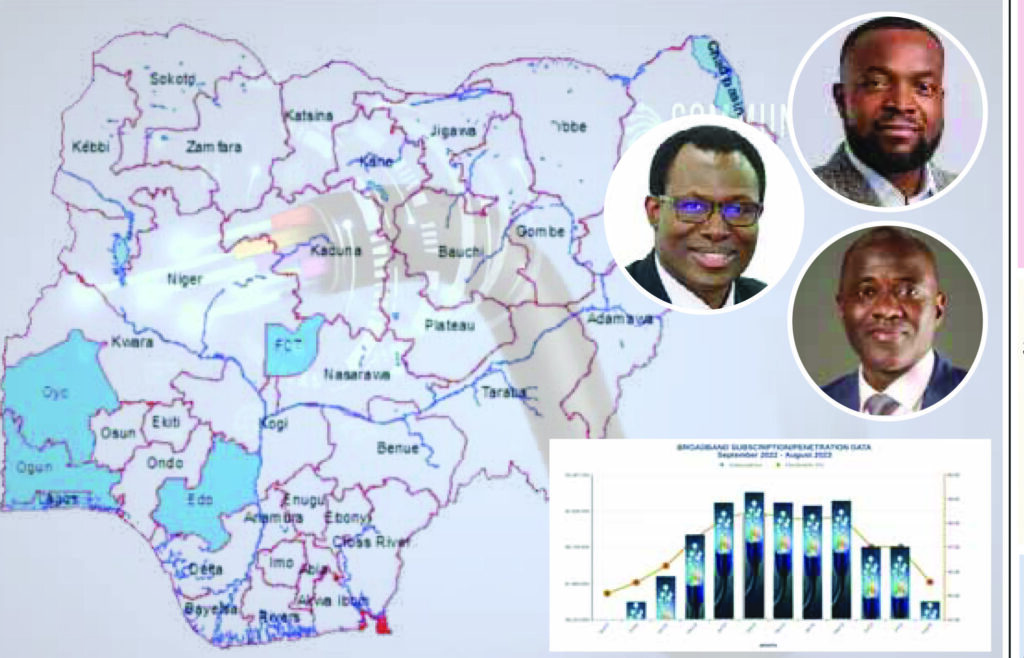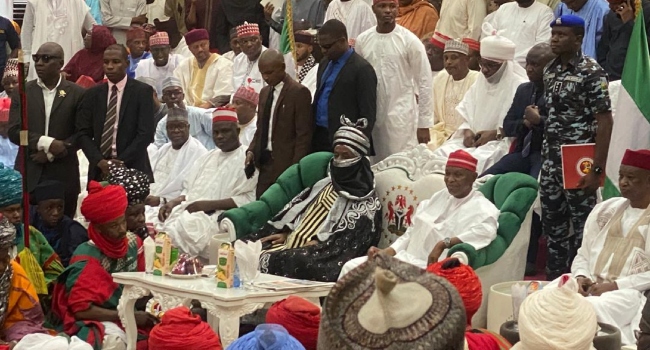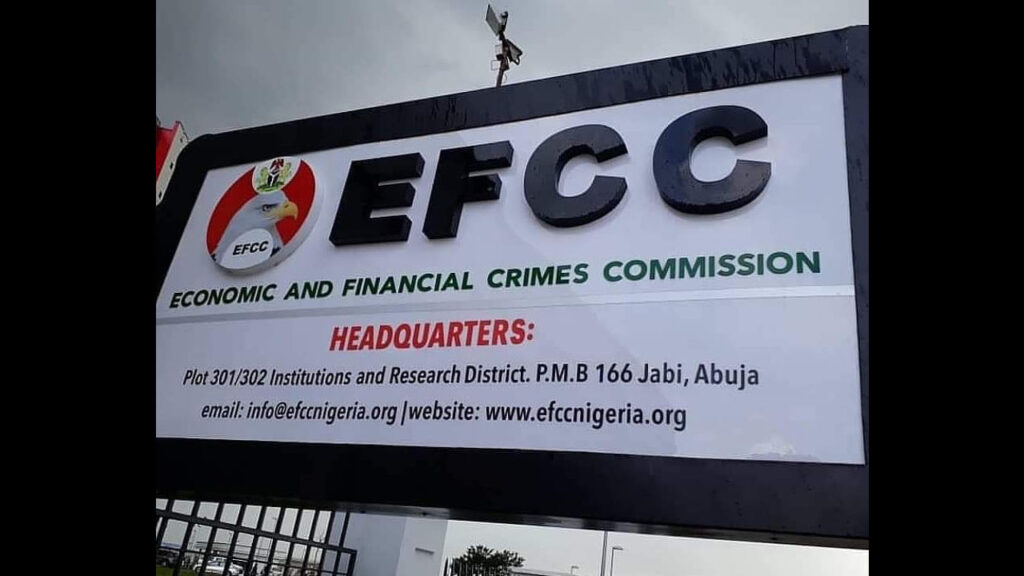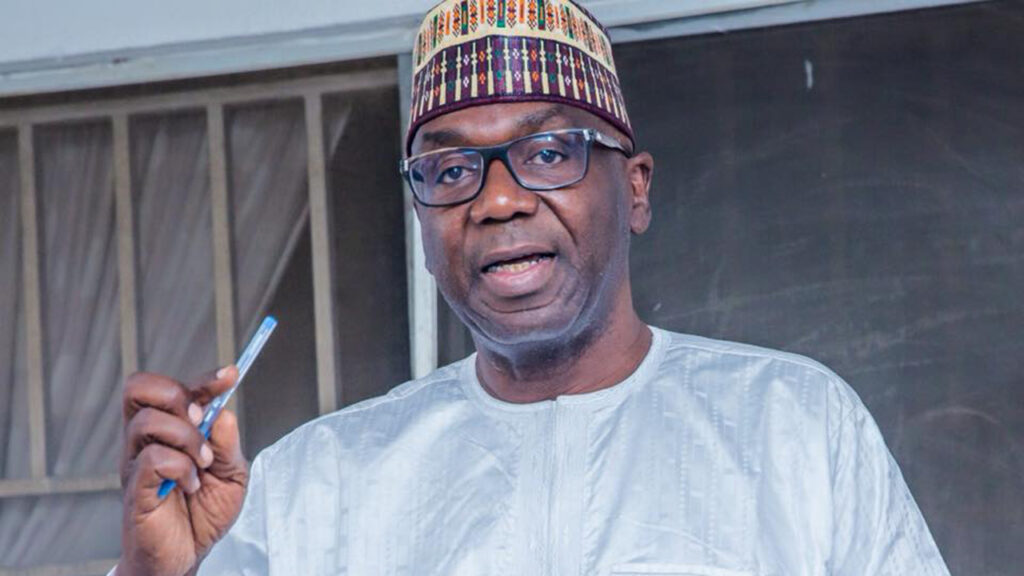
• Lagos, Edo, Abuja, Oyo and Ogun states control metro network
• ALTON appeals on RoW as infrastructure nears end of life
• Nigeria needs $2b to deploy new infrastructure
• Ministry initiates plan to tackle low ROI, boosts broadband consumption
With some months away from Nigeria’s 70 per cent broadband penetration target set for 2025, about 31 states remain unserved and underserved, a consequence of a sluggish investment in fibre optic cable deployment .
Checks by The Guardian showed that the states are populated by about 180.3 million Nigerians.
In the Ministry of Communications, Innovation and Digital Economy’s white paper on ‘Deepening Nigeria’s National Backbone and Middle Mile Infrastructure,’ sighted by The Guardian, Nigeria’s fibre links are said to be mainly owned by the mobile network operators (MNOs) that is MTN, Airtel, Globacom and other players such as IHS, Phase3, EMTS, amongst others.
Accordingly, with about 25 per cent of the fibre distances in metro fibre networks, the document revealed that the metro network is also highly concentrated in the major cities of Lagos, Edo, Abuja, Oyo and Ogun states, while many other areas remain unserved or underserved.
While Nigeria through the National Broadband Plan 2020 to 2025 has set a target of 70 per cent broadband penetration by 2025 and 90 per cent population coverage, fibre optic cable deployment is a major element crucial to achieving wider connectivity across the country owing to the latency of the infrastructure among others.
Thus far, 78,676km of fibre optic cables have been deployed as of 2023. Lagos leads with 7,864.60km; Edo, 4,892.71km; FCT, 4,472.03km; Ogun, 4,189.18km; Niger, 3,681.66km; Kaduna, 3,028.88km and Delta, 2,750.42km. Kano and Kogi follow with 2,697.72km and 2,602.25km in that order.
The least 10 states in fibre deployment are Yobe (1,233.31km), Borno (1,190.04km), Gombe (1182.40km) and Ekiti (1,178.04km). Others are Jigawa (1100.53km), Taraba (1,076.58km), Sokoto (1,066.56km), Plateau (997.45km), Ebonyi, 651.65km and Bayelsa (407.88km).
As of last August, the Nigerian Communications Commission (NCC) data put broadband penetration at 45.57 per cent with about 86.9 million Nigerians having access to the service, largely in the urban areas.
The whitepaper noted that individuals and communities face a growing barrier to navigating the interconnected landscape of modern life without reliable and affordable Internet access. It said the resulting barriers from limited Internet access range from economic to knowledge exchange barriers.
According to the ministry, economical, reliable and affordable connectivity is crucial for economic growth, job creation and social mobility, and its absence limits individuals’ participation in the digital economy, impacting their job opportunities, income level, and overall well-being.
Similarly, it said limited Internet access restricts access to information and knowledge resources, hindering individuals’ and communities’ ability to learn, innovate, and participate in modern knowledge-based societies.
Already, the Minister of Communications, Innovation, and Digital Economy, Dr Bosun Tijani, has projected that the construction of fibre optic cables nationwide in the country would require about $2 billion investment.
Tijani, who stated this last December, said his ministry, working alongside the NCC, considers fibre optic deployment as a priority to improve the quality of communication service in the country.
According to him, the federal government has already constructed about 35, 000 kilometres of fibre optics cables nationwide. The figure is 60,000 Km short of what he said the country needed to ensure complete coverage.
“In the next four years, we are going to do everything to increase the kilometres of fibre optic cables in Nigeria. We are about 35, 000 kilometres away, and we need to go to 95,000 kilometres, almost halfway there.
“It’s going to cost roughly $1.5 to $2 billion to wire the whole of Nigeria to reach that 95,000,” he said.
On the sidelines of the World Economic Forum in Davos, Switzerland, Tijani disclosed that the $2 billion infrastructure fund was getting global attention.

His ministry noted that nations gain unprecedented benefits in speed, reliability, and future scaling when they build modern broadband infrastructures. It recalled that the 2019 Broadband Plan stated that at least 120,000km of fibre optic cables in non-overlapping routes will be needed to achieve the target backbone and middle mile coverage.
It stressed that the transmission speed of fibre cables is considered fast with lower latency, as high frequencies reduce latency and improve response times.
Another justification for urgent fibre optic cable deployment is its reliability as it suffers lower attenuation losses over distance, allowing greater signal reach, and its immunity to electromagnetic interference, which prevents environmental disruptions, resulting in lower failure rates and maintenance costs over the long term.
Perhaps, Nigeria’s broadband penetration and fibre optic deployment would have gotten better had the earlier NCC broadband plan, and the InfraCo project succeeded.
The InfraCo project, initiated during the tenure of the former Executive Vice Chairman of NCC, late Dr Eugene Juwah, was improved upon by Prof. Umar Danbatta.
The InfraCos were to be responsible for providing a national broadband network to service providers and ensuring that the 774 local government areas of the country were wired.
The companies were licensed to provide last-mile services in the six geopolitical zones with Lagos standing alone for its peculiarity being the commercial hub of the country. The InfraCos were to cover the access gaps, particularly in underserved and unserved areas of the country, and provide a wholesale layer to transmission services on a non-discriminatory open access price-regulated basis.
In the plan, MainOne’s subsidiary, Infraco Nigeria Limited and IHS were the first two companies to be licensed in 2016 to cover Lagos and the North Central zone including the Federal Capital Territory (FCT) respectively.
But seeing that the model might not work considering the bottlenecks of infrastructure rollout, IHS returned the licence a few years later.
By 2018, five other companies were licensed to cover North East Zone (Brinks Integrated Solutions Limited) North West (Fleek Network Limited) South-South (Raeanna Nigeria Limited) South West (Odua Infraco Resources Limited) and Southeast (Zinox Technology Limited). In 2021, Broadbased Communications Ltd. was issued the licence returned by IHS to complete the coverage.
Almost eight years after the plan was put forward, it largely remained only in the papers, apparently it has failed.
The new EVC, Dr Aminu Maida, during his first stakeholders meeting in Lagos, promised to look into the InfraCo project if it was still viable. However, some of the licensed companies blamed the inability of the project to come to light on so many factors, including their inability to access the N65 billion subsidy promised by the federal government, ever-increasing RoW levies, topography of some of the areas to be covered, poor RoI among others.
But to ensure that the country still deploys broadband with wider coverage that guarantees RoI, the Ministry of Communications, Innovation and Digital Economy has initiated a National Broadband Alliance for Nigeria (NBAN) to foster collaboration for broadband development and adoption as well as position Nigeria at the forefront of the global digital landscape.
It explained that the NBAN is a multi-stakeholder collaboration aimed at spearheading a concerted effort to achieve universal broadband access across the nation.
Recognising the imperativeness of broadband in economic development, the ministry said the alliance will bring together key stakeholders from the public and private sectors, as well as civil society, to collaboratively develop a sustainable business model(s) for driving the adoption and consumption of Internet in key critical public institutions (schools, hospitals, government offices, libraries and markets, among others) across the nation.
The alliance is expected to also serve as a platform for government agencies, telecommunication companies, technology providers, and civil society organizations to coordinate efforts and share resources in support of the Ministry’s agenda for nationwide expansion of broadband services.
With the national desk at NCC, the NBAN nodes hosted by sub-national governments (states) will work closely with regulatory bodies to streamline processes and remove obstacles hindering the swift deployment of broadband networks. It will also drive digital inclusion and awareness to ensure the inclusion of all segments of society in the digital economy and benefit from the advantages of broadband connectivity.
The alliance is expected to enable collaboration with international partners and organisations to leverage expertise and resources for accelerated implementation and adopt a phased approach, with short-term, medium-term, and long-term goals aligning with the National Broadband Plan.
The pilot of the initiative will kick off in seven states of the country before the end of Q1 2024. The initial states are Edo, Ogun, Kwara, Katsina, Imo, Abia, Borno and Nasarawa. These initial states have been considered using their present broadband investment and management of fibre optic challenges in their respective states such as waiver of the RoW fee.

Already, telecommunication operators have appealed to governments at all levels to consider their stance on RoW charges, especially in 2024.
This appeal is coming on the need for major infrastructure upgrades for telecoms infrastructure in the country, especially fibre optics cables that are said to have reached their end of life.
Speaking The Guardian, the Chairman of the Association of Licensed Telecoms Operators of Nigeria (ALTON), Gbenga Adebayo, said there was an urgent need for major upgrades and deployment of new telecoms infrastructure, especially as the digital economy becomes the norm.
Adebayo said most of the telecoms infrastructure in Nigeria built since the revolution started over two decades ago, especially fibre infrastructure is near its end of life and as such needs to be upgraded or complete deployment of new ones.
He, however, said the major hindrance to fresh deployment has been the exorbitant RoW levies charged by governments and their agents.
“I must also mention that several infrastructures we have, particularly the fibre optic ones that were built in the early days, some of them have near their end of life. There will be a need for rebuilding by the operators. The issue of RoW will feature again.
“We need to ensure that in areas where they have subsisting RoWs, which have been obtained for the base infrastructure, where reviews will be done, operators should not be mandated again to pay for RoW. Otherwise, we will start having issues,” he said.











